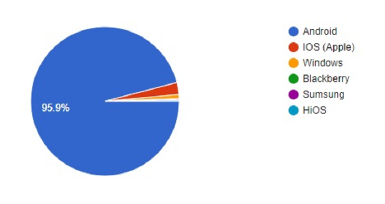


Indian Journal of Science and Technology
Year: 2022, Volume: 15, Issue: 8, Pages: 343-350
Original Article
Amrani Hassan1*, Newton Andebe2, Devotha G Nyambo1, Shubi Kaijage1
1School of Computational and Communication Science and Engineering (CoCSE), Nelson Mandela African Institution of Science and Technology, P.o. Box 447, Arusha, Tanzania
2Department of Information and Communication Technology, Pwani University, 195-80108,Kilifi, Kenya
*Corresponding Author
Email: [email protected]
Received Date:10 June 2021, Accepted Date:01 December 2021, Published Date:02 March 2022
Objectives: To develop a mobile application and integrate it with an existing University Management System for improving access and user experience for services to be accessed anytime, anywhere through connected smartphones. Methods: An online survey, interviews, and observations to collect the system requirements were gathered and analyzed essential requirements for the design and development of the mobile application. Agile software methodology was used because of its flexibility to accommodate changes. The integration architecture was based on RESTful API and SOAP web services. The System Usability Scale (SUS) methodology was applied to assess the user’s perception and usefulness of the mobile application. Findings: The developed Pwani University (PU) mobile application was able to successfully connect with the Students Information Management System (SIMS) to access services. Unit, integration, and system testing were performed to ensure the intended specifications were met. The key findings from the survey show that smartphones, the majority of which run on the Android platform, are the most commonly owned and used mobile devices among students. The majority of students 97% agreed that the justifications for developing the app were valid. The study indicated that 68% of students want access to course information, hostel information, and exam results via their mobile gadgets. The usability and acceptance testing were very successful with more than 90% of users liking the app and more than 80% did not need any assistance to use the app and did not find it cumbersome. Novelty : The developed mobile application provides seamless integration with the PU SIMS, increasing access to services, portability, and convenience to staff and students.
Keywords: Mobile application; App design; University app; App integration; User experience; ERP
© 2022 Hassan et al. This is an open-access article distributed under the terms of the Creative Commons Attribution License, which permits unrestricted use, distribution, and reproduction in any medium, provided the original author and source are credited.
Published By Indian Society for Education and Environment (iSee)
Subscribe now for latest articles and news.